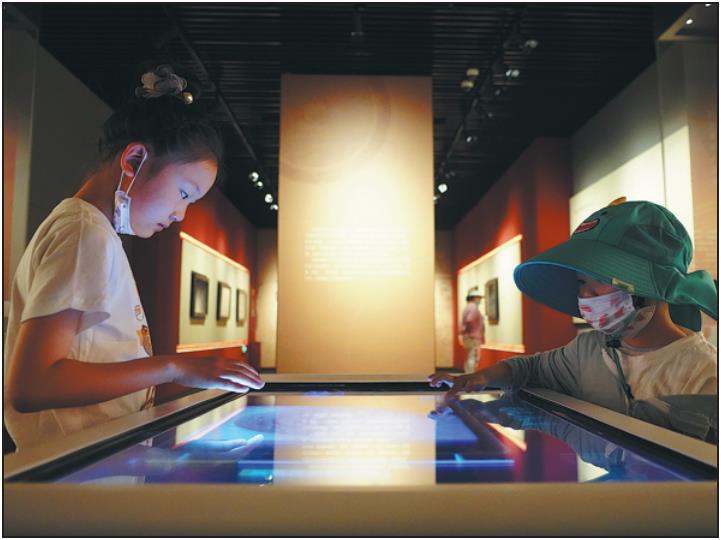 Two children visit the Jin Shangjing History Museum in Harbin, Heilongjiang province. [Photo/Xinhua]
Two children visit the Jin Shangjing History Museum in Harbin, Heilongjiang province. [Photo/Xinhua]
HARBIN — At the Jin Shangjing History Museum in Harbin, capital of Heilongjiang province, a gleaming, thumb-sized silver coin attracts curious visitors. The coin, shaped like a double-bladed axe, has a remarkable history.
Minted by the Jin Dynasty (1115-1234) government, it was the first official currency to be made of silver in Chinese history, said Hu Zhiyuan, director of the guidance department of the museum.
The engraved traditional Chinese characters on the silver indicated its information, with Cheng'an referring to the name of the era (1196-1200), and baohuo meaning currency, Hu said.
The institutions in charge of forging money and its central government management agency were also inscribed on the coin.
Hu said its unique appearance and Chinese inscriptions reflected the influence of traditional Chinese culture during the Jin Dynasty, showcasing the integration of ethnic cultures during its century-long reign.
The Jin Dynasty, founded by the Jurchen people, ruled over northern and northeastern China, coexisting with the Song, Liao, Yuan and Western Xia regimes that controlled parts of the country during the period.
Hu explained that the Jurchens initially made a living by fishing and hunting and would barter within their tribes. However, they later began using bronze coins from the Liao (916-1125) and Song (960-1279) dynasties ruled by the Khitan and Han people, respectively, as trade between their three groups grew.
In 1125, after the Jin regime overthrew the Liao rulers and advanced southward into Song territory, a significant influx of currency and craftsmen from the southern part of China reached the Jin's heartland, which had a profound impact on its own monetary system, according to Hu, adding that the shape and the layout of the Chinese inscriptions of some coins from the Song and the Jin dynasties are similar — further evidence of ethnic integration.
Hu said that during the century-long interactions between the Song and Jin dynasties, peace prevailed for over 60 years, with the trade of fur, ginseng, tea and textiles flourishing through designated border markets. Peculiar silver coins and ingots of the Jin Dynasty were used and then carried across China.
"Through such ingots discovered in what is now Lintong district of Xi'an, Shaanxi province, researchers can see close economic and trade exchanges between the Jurchen and other ethnic groups in different regions of China," Hu said.
As the abundance of ice and snow in the winter has drawn more and more tourists to Harbin, an increasing number of visitors are flocking to the museum, delving into the lesser-known stories of the Jurchen and other northern Chinese ethnic groups through its artifacts.
Mu Changqing, deputy director of the museum's cultural relics preservation department, said the museum welcomed nearly 180,000 visitors from January to June this year, with a peak of 15,023 visitors in a single day.
The museum plans to provide multimedia displays, replicate historical scenes and organize educational lectures so visitors can better learn about the history of the Jin Dynasty and the cultures of different ethnic groups.





